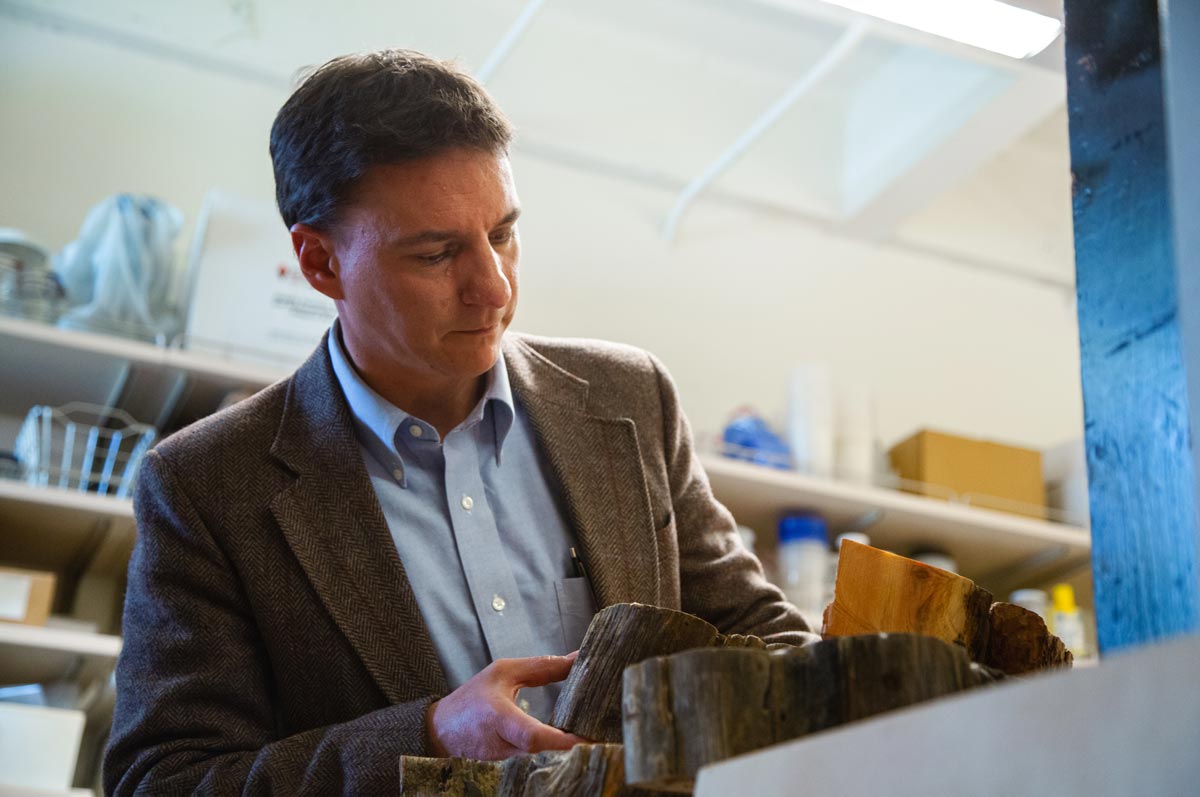Professor listens to trees, to benefit humans
John Sakulich, Ph.D., has a lot of old stumps in his office. And those stumps have a lot to say.
To scientists who know how to listen, the stumps, or rather the rings within them, tell stories about the lives the trees once lived and about the Earth those trees lived on.
Sakulich, a Regis associate professor of environmental science and environmental biology, not only hears what tree rings have to say, but he also interprets their messages to help communities like Denver better understand and mitigate climate change.

One hunk of fallen tree in Sakulich’s collection dates to a time when humans were starting to domesticate cattle and turn the grain they were just starting to cultivate into beer.
But most fell more recently, and their messages are environmental cautionary tales. “Trees respond to the conditions they grow in. They are faithful recorders of environmental conditions,” Sakulich said. “When trees have a good growing season they grow nice fat rings. During drought or harsh years, the rings are narrow. And all trees within the same region show the same patterns.”
Those patterns tell scientists about fire conditions in past centuries. So, Sakulich and his Regis students work with Denver Mountain Parks reconstructing what fires looked like in the past. During the summer or over spring break, Sakulich takes students to pine forests near Morrison, Colo. to collect pieces of fallen trees. Then students help prep the samples in order to compare current and historic fire patterns. With that knowledge, the city can determine the best places to thin out brush to mitigate fires.
Sakulich himself got interested in environmental biology as an undergraduate at Penn State. “I was trying to decide on a major, and I took a class in biogeography, loved the class and had a great professor,” he said.
His work is a reminder of the changing climate. A century ago, fires were few. Decades ago, they were seasonal. Now fires are virtually year-round.
Climate change is altering the landscape in other ways as well, Sakulich said. When the Hayman Fire burned more than 138,000 acres in 2002, it was the largest fire in Colorado’s history. In the 22 years since, three fires have eclipsed its size. And, scientists have tracked regrowth in the burn area. “We’re not seeing much tree regeneration,” Sakulich said. Because of prolonged drought, grasses and brush are emerging on the charred landscape where evergreens once thrived.
Lately too, like many of their human counterparts, Colorado’s trees are getting into mountain climbing, inching their way further up, past the tree line. Sakulich said. While tree cover may be pretty, it’s bad news for creatures, like the pica, who make their homes in the clouds. “It’s kind of an escalator to extinction,” he said. One that, thanks to the work of scientists like Sakulich, humans may be able to put the brakes on.



